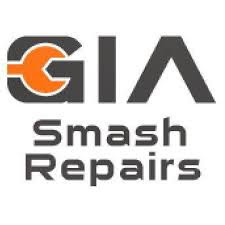A dark brown blemish on the rear bumper, or an acrylic bubble behind the door are some indications that the iron parasite has been active and causing rust. Otherwise, fine automobiles regularly fasten their casualties since they rust, even though this is a primarily preventable concern. Fighting oxidation in iron-based materials may appear to be endless, that is why making sure that you will have regular car rust repair is essential.
Furthermore, despite the superior coats and alloys produced by researchers and technicians, iron's unstable chemical nature ensures that it will constantly rust in native surroundings. In reality, metal and most iron will decrease to iron oxide and other parts over a long period. Explore this post for more information regarding car rust repair and how it extends its life.
Why Are Cars Rusty?
The electrical and chemical collapse of iron-based metallic materials forms rust caused by oxidation. This occurs when iron ground particles respond with gaseous oxygen to form a new molecule, Fe2O3, also identified as iron oxide.
Pure iron oxidizes slowly. Evaluate an old iron engine compartment, and you will notice a light coating of rust on the exterior but little infiltration through the metallic material which is caused by cheap car detailing. Sadly, iron alone is not an excellent material for car construction, so steel alloys are commonly used today. Planning to incorporate a pinch of carbon into iron results in steel that has significantly improved formability, tensile strength, and flexibility. This increased strength, however, comes with a price, as it introduces contaminants that hasten the forming of rust.
Furthermore, exposed steel rusts at various ratings are based on many variables, including alloy parts, width, the surroundings in which it lives, and the kind of heat treatment it receives. Poorly built cars in the 1970s developed surface rust immediately when they arrived at the docks. Within several years, uncontrolled raw sheet steel could rust through.
How to Do Car Rust Repair?
Rust decomposes in phases and understanding where a trouble spot is during that procedure could assist you in determining the best alternative. These are the three major rust phases and how to do car restoration Sydney.
Surface Rust
Scratches, cracks, and paint are the earliest indicators of trouble. If you keep a vehicle containing metal disc brake rotors idle for a time, surface rust will build on the rotors. In any case, it is better to address surface rust as quickly as you notice it. In harsh weather, the rusting vehicle could turn into a hole-filled disaster.
Moreover, this car rust repair is similar to regular paint restoration. Begin by removing the paint and rust with sandpaper or an abrasive wheel until the precise, bright steel is revealed—coarse the surrounding regions, so your body treatments stick nicely to the automobile.
Scale Rust
Occasionally, mobile car detailing includes the chemical reaction that corrodes the surfaces and weakens the metals. When you do not address surface rust and enable breakdown to go deeper into the steel, bubbles in your vehicle's paint could appear. As rust enters the surface in this manner, it forms a pitted, rough corrosion known as scale.
Scale removal includes:
- Removing rust with quite a wire brush.
- Removing irregularity with a grinding process.
- Flattening off the surface with sandpaper.
When covering it back up, ensure you are bare steel, and there are no large flakes of rust remaining; otherwise, your filler or sealer might snap back immediately off.
Penetrating Rust
After extended exposure, steel is transformed into fragile iron oxide, and holes emerge. When left uncontrolled, rust would ultimately eat through the metal on your automobile. This deep rusting causes anything in the bumpers to cause more severe issues like weakening foundations and suspension systems.
Do not wait for bubbles to emerge on your automobile's body when you reside in a rusty area. Check beneath the vehicle regularly for rough or damaged sections that might pose a safety issue on the road if not repaired.
How to Stop Rust From Forming?
Rust buildup on automobiles is mainly avoidable. The most apparent advice is to clean your automobile on a routine basis to maintain the body and underbelly free of dirt, salts, and road grime which cause corrosion. Several contemporary car washes could blast the underbelly of your vehicle with water to remove a lot of the filth.
Also, inspect the drainage holes at the bases of rocker panels and doors that enable rainwater to escape. Clean these holes using pipe cleaners and maintain the car's crannies and nooks dry. Several tools and lubricants can also be employed to prevent components from rusting. A small nozzle could be utilised to access tight underbody locations and drain moisture or harmful filth.
Even the hardest battered winter beater must provide decades of driving safety if appropriately secured against the weather and maintained clean of harmful salt and dirt.
What Is The Importance of Car Maintenance?
Car upkeep on a routine basis maintains your vehicle in good running condition and assists in avoiding costly mechanical issues down the line. When the time comes to trade or sell the car, accurate service history helps increase its worth. Car restoration Sydney does need a financial and time commitment. But, maintaining your vehicle frequently assists you in avoiding big repair bills that result from a roadside failure. Don't allow rust to collect in your automobile; get professional assistance from car body restoration near me when unsure how to care for your vehicle. The GIA Smash Repairs is here to assist you with car rust repair services in Sydney.








0 Comments